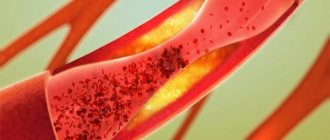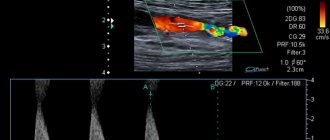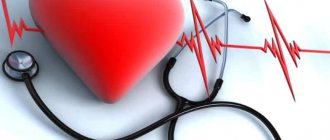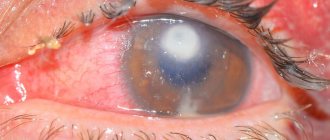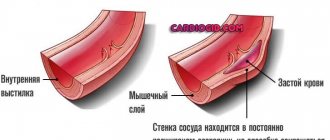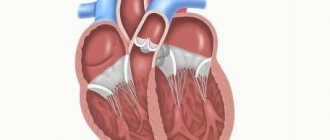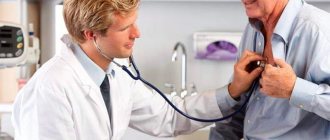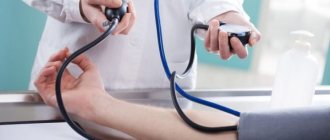Symptoms
This pathology refers to a syndrome that serves as a prerequisite for the development of diseases of the bloodstream system, as well as diseases of the heart organ.
Disturbances in lipid fat metabolism increase the total cholesterol index, which provokes a poor rate of passage through the main arteries of the blood, which causes thickening of the blood plasma and the formation of blood clots.
Poor blood flow through the vessels does not sufficiently clear the vascular membranes of the sediment of low molecular weight lipoproteins, and bad cholesterol molecules settle on the intima of the vessels, provoking the formation of cholesterol plaques, which over time become overgrown with calcium molecules and develop the disease - atherosclerosis.
The development of hypercholesterolemia occurs in old age and this is facilitated by insufficient production of hormones by the endocrine organs, which leads to age-related disturbances in the hormonal background of the human body.
In women during menopause and menopause, there is a significant accumulation of lipids in the body, which causes their excess, which is reflected in the syndrome of hypercholesterolemia.
Men after the age of forty are susceptible to the accumulation of cholesterol in the body 4 times more often than the accumulation of lipoproteins occurs in the female body.
Classification of hyperlipoproteinemias
Based on the causes of occurrence, the following types of dyslipidemia are distinguished:
- primary (hereditary and polygenic - a combination of hereditary with dyslipidemia associated with the action of external factors);
- secondary (developed against the background of atherogenic chronic diseases);
- nutritional (caused by errors in eating).
Based on changes in the chemical composition, dyslipidemia is classified into:
- isolated (associated with an increase in the concentration of cholesterol, which is part of all lipoproteins);
- combined (triglycerides are also added to excess cholesterol).
Fredrickson classification of dyslipidemias
- Type I Increasing the concentration of chylomicrons (CM) - the largest compounds containing a lot of protein. It does not affect the formation of atherosclerotic plaques and has its own clinical picture. This is a hereditary pathology transmitted along with genes.
- II a type. Increasing the amount of lipoproteins due to low-density compounds (LDL). In the case of type II a hyperlipidemia according to Fredrickson, the risk of developing atherosclerosis increases.
- II in type. Combined increase in blood concentrations of low-density and very low-density lipoproteins (LDL and VLDL). Such an excess is the most favorable condition for the development of atherosclerosis.
- III type. Excessive LDL levels are a hereditary disease. This is highly atherogenic dyslipidemia.
- IV type. VLDL predominates. The risk of atherosclerotic vascular damage is mild.
- V type Dyslipidemia caused by CM and VLDL. In such situations, atherosclerosis rarely develops.
Almost all types of hyperlipidemia according to this classification are accompanied by increased levels of triglycerides and are combined. Dyslipidemia type 2a is isolated, however, its role in the development of atherosclerotic lesions should also be taken into account.
What does pathology affect?
The syndrome affects pathological changes in the structure of the vascular membranes of the blood flow system throughout the body of a sick person.
These violations manifest themselves:
- In changes in the lumen of the main arteries of large diameter;
- In lesions of the coronary arteries;
- In disorders in the vascular wall of cerebral vessels;
- In a pathological change in the structure of the cardiac myocardium;
- In violations of blood patency in small capillaries of the extremities and the entire peripheral sphere of the blood flow system;
- Disturbances in internal organs and in the vessels of these organs.
A complicated form of hyperlipidemia is atherosclerosis, which affects all vessels in the bloodstream and causes serious diseases that can be fatal.
Reasons for development
The etiology of the syndrome has a different nature of occurrence:
- This syndrome can be inherited by a child from biological parents. The reason for the transmission of an abnormal defect at the gene level may be one of the biological parents, or two parents at the same time may have defects in genes. This process distorts information to the body about the rate of cholesterol synthesis. There is an excessive production of cholesterol molecules, which leads to a significant excess of it;
- An acquired cause of pathology when the patient does not comply with the measure in consuming fatty foods containing large quantities of low-density lipoproteins. There is a temporary increase in cholesterol - this is when a person has eaten a large amount of fatty foods of animal origin. And also a constant increase in the cholesterol index is a chronic overeating of foods containing animal fat by the patient.
Chronic overeating of foods containing animal fat
Hyperlipidemia
In addition to a genetic predisposition to the accumulation of cholesterol and disordered eating of cholesterol-containing foods, hyperlipidemia can be triggered by diseases in the body that have a chronic stage of development:
- A disease of the endocrine organ of the thyroid gland is hypothyroidism. If there is insufficient production of hormones by this organ, which occurs against the background of inflammation in the organ, or due to a neoplasm in it, disturbances occur in the metabolic process of the body and disturbances in the metabolism of the entire human body;
- Pathology of the endocrine system - diabetes mellitus. In diabetes, there is a disruption in the ability of glucose molecules to penetrate tissue cells, and excess sugars are present in the blood, which disrupts the integrity of the internal membranes of the vascular membranes. With a standard glucose index from 3.30 mmol/l to 5.0 mmol/l, in diabetes mellitus the index in the blood composition is no less than 60.0 mmol/l, and can also reach more than 20.0 mmol/l;
- Changes in liver cells, which leads to improper functioning of the organ, and there is a low outflow of bile from the organ. With poor bile outflow, all waste cholesterol is not utilized, which leads to hyperlipidemia. This pathology can be caused by stones in the gall bladder, or stones in the bile ducts.
Factors provocateurs
The following provoking factors can cause an increased level of lipoproteins in the body:
- A long period of taking medications belonging to the group of diuretics, the class of beta blockers, as well as immunosuppressants;
- A sedentary lifestyle, which provokes stagnation in the blood flow system, as well as stagnation in metabolism;
- Nicotine addiction;
- Chronic alcoholism;
- Drug addiction;
- Chronic degree of development of hypertension;
- Age category for men - 45 years, for women during menopause;
- If there are relatives in the family who suffered from atherosclerosis, or who suffered a stroke (heart attack), the risk of hypercholesterolemia increases several times. According to ICD - 10, this pathology may have a different subgroup.
At the doctor
Hypercholesterolemia: what it is, symptoms and causes of the disease
Hypercholesterolemia is a symptom indicating high blood cholesterol levels. The exception is hereditary forms of hypercholesterolemia, which are considered an independent nosological entity.
Cholesterol is a lipophilic alcohol that is insoluble in water. Most of it (80%) is synthesized by the liver, the remainder comes with food. The organic compound performs a number of important functions:
- necessary for the synthesis of vitamin D and steroid hormones;
- basis for the synthesis of fatty acids;
- regulates cell permeability;
- protects red blood cells from hemolytic poisons.
Cholesterol cannot independently travel through the bloodstream, which is based on water. Its transport is carried out by lipoproteins - complex complexes consisting of protein molecules and fat. The more fat they contain, the lower their density.
According to this indicator, lipoproteins are distinguished between very low (VLDL), low (LDL), medium (LPSP), high density (HDL), as well as the largest molecules - chylomicrons.
The sum of all types of lipoproteins is “total cholesterol,” one of the most important biochemical indicators of fat metabolism.
LDL and VLDL are considered atherogenic – contributing to the development of atherosclerosis. The cholesterol associated with them is “bad.” HDL, on the contrary, are antiatherogenic substances, that is, those that prevent atherosclerotic deposits. The sterol associated with high-density lipoproteins is called the “good” sterol.
At a normal level and ratio of these substances, the risk of developing atherosclerosis is insignificant. Everything changes when the balance is upset.
Excess atherogenic lipoproteins “cling” to any irregularities or roughness of the vessel wall. New ones stick to the small spots, they grow, gradually impeding blood flow.
Ultimately, the formation can reach such a size that it blocks the lumen of the vessel.
ICD-10 code
In the International Classification of Diseases, 10th revision, various types of hypercholesterolemia are classified in group E78. Pure hypercholesterolemia is allocated to a separate subgroup E 78.0, which includes 5 types of pathologies:
- hyperlipidemia (group A);
- hyper-β-lipoproteinemia;
- hyperlipoproteinemia with LDL;
- familial hypercholesterolemia;
- Fredrickson hyperlipoproteinemia, type IIa.
In ICD-10, hypercholesterolemia as a separate disease is also included in group 78.2
Familial hypercholesterolemia
The disease is caused by a genetic disorder of fat metabolism. There are two types: homozygous - the defective gene is received from both parents, heterozygous - from one. The first disease is more rare (1 person.
per 1,000,000), but much more severe. The level of cholesterol in it exceeds the norm by 4-6 times. The second pathology is more widespread (1 person out of 500), but less dangerous.
The level of sterol is 2-3 times higher than that of a healthy person.
People with this disease are at risk of early development of atherosclerosis, as well as its complications: coronary heart disease (CHD), myocardial infarction.
Causes
In most cases, the cause of hypercholesterolemia is lifestyle errors. First of all, poor nutrition. When the diet contains excess trans fats, saturated fats, sugar, cholesterol (to a lesser extent), this leads to an increase in the concentration of TC and LDL. A sedentary lifestyle contributes to impaired fat metabolism.
Causes beyond a person's control include genetic ones. A defect in one of the genes on chromosome 19, inherited from one or both parents, leads to a disorder of fat metabolism that is not dependent on nutrition.
At-risk groups
Part of the population is more susceptible to developing hypercholesterolemia than others. Risk factors include:
- Floor. In women after menopause, the level of “bad” lipoproteins increases.
- Age. Men over 45 and women over 55 are at risk.
- Family history. Hypercholesterolemia more often develops in people whose parents/siblings suffered from manifestations of heart disease before the age of 55 (men) or before the age of 65 (women).
- Obesity. Mass index more than 30.
- Waist circumference. The likelihood of developing hypercholesterolemia is higher in men with a waist circumference of more than 102 cm, as well as women with a waist circumference of more than 89 cm.
- Smoking. Components of tobacco smoke can damage the walls of blood vessels, making them an excellent platform for the attachment of atherosclerotic plaques. Smoking affects the “good” lipoproteins: it increases the level of the former and decreases the latter.
- Diabetes. High blood sugar promotes the growth of LDL and decreases the concentration of HDL. It can also damage the lining of the arteries.
Diagnostics
Most people with high cholesterol do not have any symptoms until atherosclerosis-related diseases become apparent.
People with a hereditary form of the disease develop xanthomas - skin nodules filled with cholesterol. Typical places are various tendons, the Achilles are especially favorite. Often flat nodules ranging in size from a pea to a bean are noted on the eyelids. Such neoplasms are called xanthelasmas.
People over 20 years old are recommended to take a blood test every 5 years, including: LDL, HDL, triglycerides, total cholesterol. Since hypercholesterolemia initially develops without symptoms, this is the only way to diagnose it in time.
More frequent testing is recommended for anyone at risk. Applies to patients whose relatives had heart problems or high cholesterol levels at an early age.
Those whose relatives are parents or grandparents need to be especially attentive to their health.
Normal indicators of fat metabolism in healthy people:
- TC – less than 5.0 mmol/l (
- HDL – more than 1.0 mmol/l (> 40 mg/dl) in men and more than 1.2 mmol/l (> 45 mg/dl) in women;
- LDL – less than 3.0 mmol/l (
- triglycerides – less than 1.7 mmol/l(
For patients with coronary artery disease, as well as diabetes mellitus, the normal level is considered:
- TC – less than 4.5 mmol/l (
- LDL – less than 1.8 mmol/l (
Cholesterol taken under control in time reduces the risk of developing heart pathologies, heart attack, and death due to heart disease, even if they already exist.
In addition to a blood test, the therapist will conduct a general examination, study the patient’s medical history, measure pulse, blood pressure, and listen to the heart. If there is a suspicion of cardiovascular pathologies, the doctor will refer the person to see a cardiologist.
Children and young people are also recommended to monitor cholesterol levels twice: at the age of 9-11 years, and then 17-21 years. If a hereditary disease is suspected, testing may be prescribed at an earlier age. You should not donate blood for cholesterol to adolescents (12-16 years old) due to the risk of receiving false positive results associated with puberty.
Features of treatment
In the initial stages of hypercholesterolemia, if the disease is not hereditary, for many people it is enough to reconsider their lifestyle. Change your diet, start moving more. Treatment with medications makes sense if changes do not help.
Diet, sample menu
The most effective diet for lowering cholesterol is a vegetarian one. People who cannot find the strength to give up meat are advised to at least reduce their consumption of red meat (pork, beef). Substitutes can be legumes, chicken, rabbit.
Your diet will be healthier if you follow these tips:
Choose healthy fats. Saturated ones increase LDL cholesterol levels. Red meat, eggs, and whole dairy products are the main sources of these lipids. Replace them with vegetable oil, nuts, and seeds.
Avoid trans fats. There are a lot of them in all kinds of snacks and fast foods. Conscientious manufacturers indicate the amount of trans fats on the packaging.
Limit cholesterol intake: meat, egg yolks, low-fat dairy products.
Eat whole grain cereals. Oatmeal, buckwheat, millet, rice, durum wheat pasta contain fiber, vitamins, and minerals that the body needs.
Focus on fruits and vegetables. These products are rich in dietary fiber, vitamins, and minerals. Seasonal vegetables are considered the healthiest.
Add halibut, tuna, cod, herring, mackerel, and salmon to your diet. These types of fish contain much less saturated fat and cholesterol than chicken, beef, and pork. Salmon, herring, and mackerel are good sources of omega-3 fatty acids, which are essential for a healthy heart.
Moderate doses of alcohol can increase lipoprotein levels, but not enough to recommend it as a treatment option. Abuse leads to disruption of the liver, increases the risk of developing atherosclerosis, as well as many other diseases.
An ideal diet should include (% of total calories):
- saturated fat – less than 7%;
- monounsaturated fats – 20%;
- polyunsaturated fats – 10%;
- proteins – 15%;
- carbohydrates – 50%;
- dietary fiber – 25 g/day;
- cholesterol – less than 200 mg/day.
What might your daily menu look like?
- Breakfast: oatmeal with banana, orange juice, toast, coffee or tea.
- Lunch: a portion of vegetable soup, an apple, a salad of tomatoes, cabbage, herbs, seasoned with low-fat sour cream, fish, compote.
- Dinner: rice, low-fat cheese, seasonal vegetable salad, beans.
- Snacks: vegetables, nuts, seeds, carrots.
Medications
Hypercholesterolemia is a rare problem that many people can treat without medication. All drugs are prescribed only when diet and physical activity are ineffective.
A doctor may prescribe cholesterol-lowering pills to patients who are at high risk of developing complications. Taking medication does not eliminate the need to follow a diet.
On the contrary, proper nutrition is a prerequisite for drug therapy.
There are 5 groups of medications used to correct cholesterol levels:
- Statins, another name for HMG-CoA reductase inhibitors. These include lovastatin, atorvastatin, simvastatin, pravastatin, fluvastatin, rosuvastatin. Statins block the enzyme needed for cholesterol synthesis. They have the ability to reduce cholesterol levels, “bad” lipoproteins, and increase “good” ones.
- Bile acid sequestrants. The most typical representatives of the group are cholestyramine and colestipol. These drugs bind the body's free bile acids and are excreted in the feces. The only way to combat fatty acid deficiency is to break down cholesterol. This group of drugs is rarely prescribed because of their ability to lower the level of “good” lipoproteins.
- Vitamin B3 (PP, nicotinic acid). Its large doses have cholesterol-lowering properties.
- Fibrates. Gemfibrozil, fenofibrate, clofibrate are prescribed to people primarily to combat elevated triglyceride levels.
- Cholesterol absorption inhibitors. The body obtains 20% of sterol from food. Drugs in this group reduce the absorption of cholesterol from food. A typical representative of the class is Ezetimibe.
Statins are the first choice drugs.
Complications of hypercholesterolemia
If hypercholesterolemia is not treated, deposits of cholesterol and lipoproteins will begin to appear on the walls of blood vessels. As the artery grows, the lumen will narrow, until it is completely blocked - atherosclerosis. The disease can lead to the following serious complications:
- stroke;
- heart attack;
- angina attack;
- hypertension;
- chronic renal failure;
- pathologies of peripheral circulation.
Prevention
Prevention of non-hereditary hypercholesterolemia is in many ways similar to treatment:
- a low-salt diet rich in fruits, vegetables, and whole grain cereals;
- limiting the consumption of animal fats;
- moderate consumption of “good fats”;
- to give up smoking;
- at least 30 minutes of physical exercise daily (at least brisk walking);
- alcohol restriction;
- timely blood testing for cholesterol, LDL, HDL, triglycerides.
Symptoms
At the initial stage of its development, it does not manifest itself in any way, and there are no visible symptoms.
This pathology is very rarely diagnosed until it begins destructive effects in the bloodstream system. When the first visible symptoms appear, then this pathology is in a progressive stage, which is very difficult to treat.
In the process of progress, an excess of lipids disrupts blood flow in the cerebral vessels, which leads to the following symptoms of disorders in the brain:
- Decreased memory;
- Decreased vision clarity;
- Intellectual abilities are limited;
- Loss of concentration on important tasks;
- Unsteadiness in gait appears;
- There is a severe headache and dizziness in the head.
Xanthomas appear - these are compactions of a lipid substance that accumulate on the tendons, as well as on the fingers and toes.
Deposits, fatty accumulations of xanthelasma, form on the eyelids.
The advanced stage of the pathology has symptoms of atherosclerosis, leading to cerebral stroke and heart attack.
What is dyslipidemia
When the level of lipid balance is increased, this condition is called hyperlipidemia, and if it is decreased, it is called hypolipidemia.
Dyslipidemia is a pathological condition in which the level of fat in the blood is imbalanced, that is, a patient with this disease has either high or low levels of cholesterol fractions.
Cholesterol is divided into subtypes:
- HDL is high density lipoprotein. This fraction is responsible for the production of the main sex hormones - testosterone, estrogen and cortisol. HDL is involved in the creation of new cells and provides nutrition to all body tissues with nutrients and oxygen. In addition, this fraction collects all residual cholesterol throughout the body, transports it to the liver, where the excess is subsequently processed and utilized. Therefore, it is important to maintain normal HDL parameters.
- VLDL are very low density lipoproteins. This type of cholesterol acts as a transporter for the delivery of triglycerides from the liver to all organs. This fraction is the most atherogenic, therefore the content of VLDL in the blood should not exceed acceptable values.
- LDL – low density lipoproteins. This type is distinguished from the previous one during the synthesis process. Its main function is the delivery of cholesterol to all tissues of the body. The standard values for its content in the blood are very small; it is necessary to maintain their normal values.
The last two fractions have the most pronounced advantage of deposition in the cholesterol sediment. They are the ones who give total cholesterol a bad name, provoking the occurrence of atherosclerosis.
Diagnostics
To establish a diagnosis, you need to come to an appointment with a doctor, who will examine the patient’s body to identify external signs of high cholesterol levels in the body.
After an examination and medical history, the doctor makes an initial diagnosis of hypercholesterolemia, and in order to identify a more accurate diagnosis, it is necessary to conduct laboratory diagnostic tests.
The following methods are used to carry out laboratory diagnostics:
- General analysis of blood composition;
- Biochemical lipid analysis;
- Lipid spectrum, in which the following fractions of lipoproteins are noted in the lipid profile: HDL, LDL, as well as VLDL, and triglycerides.
Only after a full examination by laboratory methods, the doctor establishes an accurate diagnosis in accordance with the list of ICD-10 - E 78.0 (hypercholesterolemia).
Biochemical lipid analysis
Diet
The main method of reducing cholesterol without using medications is a diet that can correct the cholesterol index in the blood, if it is not very high. The diet is also used during drug treatment.
Diet principles:
- Salt restriction;
- You need to drink up to 2 liters of water;
- It is forbidden to eat foods with animal fats;
- It is necessary to reduce the consumption of light carbohydrates;
- Do not eat foods containing trans fats;
- It is necessary to eat lean meat and sea fish;
- Introduce more vegetables and herbs into the menu, as well as legumes and cereals;
- Eat fruits instead of desserts that are high in fat.
Also, the principle of this diet is based on the method of preparing food, when it is impossible to cook by frying, and on the diet - eat up to 5 times a day, in small portions.
Protein sources
Drugs
The treatment process begins with the use of drugs from the statin group. This group includes medications such as Atorvastatin and the drug Rosuvastatin. Statins have anti-inflammatory properties and also reduce the production of cholesterol by liver cells.
With the help of bile sequestrant drugs, they also reduce the synthesis of cholesterol and accelerate the process of metabolism and utilization of waste lipoprotein molecules.
Drugs from the fibrate group prevent the accumulation of triglyceride molecules in the body.
Treatment
Treatment measures consist of two necessary components: drug therapy and changes in the patient’s lifestyle, diet and physical activity (gymnastics and regular physical activity, walking are necessary to lose weight and improve blood supply to organs).
Nutrition
Proper nutrition, taking into account metabolism and limiting fats of animal origin, can help eliminate excess cholesterol from the body.
It is necessary to adjust the patient's diet:
- Ensure the predominance of food of plant origin;
- Reduce salt intake;
- Exclude sausages, smoked sausages, lard, and canned food from the menu;
- Eliminate cream, sour cream, butter;
- Refuse products offered by fast food outlets;
- Do not eat white baked goods and sweet baked goods;
- Dose the presence of liver, egg yolks and kidneys in the diet towards a decrease.
Pay special attention to the presence of products on the table:
- Any fish, including limited fatty varieties of sea fish;
- Lean meat in small portions;
- A small amount of nuts;
- Bean products;
- Whole grain porridge;
- Fruits and vegetables contain fiber, which helps reduce cholesterol.
It is preferable to use food products raw; they can also be boiled, baked, steamed and stewed in a small amount of vegetable oil.
Vegetable oil does not contain cholesterol, but limiting its amount is necessary to get rid of excess weight in case of obesity.
Subject to dietary restrictions, cholesterol levels are reduced and the patient’s weight is normalized, which has a positive effect on lipid metabolism.
A small amount of red wine is allowed due to the presence of resveratrol in it, which strengthens the walls of blood vessels and has a vasodilating effect.
Natural herbal remedies, herbs, decoctions and tinctures from them can also help in healing the body and
reducing cholesterol levels. These are pollen collected by bees, garlic, artichoke extract, apples, flax seeds, flaxseed oil, alfalfa sprouts, linden blossom, milk thistle, green tea.
A separate point is the need to quit smoking and drinking alcohol. When nicotine enters the blood, conditions are formed that aggravate the narrowing of the lumen of blood vessels. According to statistics, among smokers there are three times more patients with hypercholesterolemia than among non-smokers.
Prevention
Preventive measures are that prevention and non-drug therapy should complement each other.
Preventative measures that can stop the accumulation of cholesterol in the body:
- This is the fight against obesity. A balanced low-calorie menu will allow you to lose extra pounds and reduce the lipid index in the body;
- Quitting nicotine and alcohol addiction will help correct cholesterol in the blood;
- Daily adequate exercise will reduce cholesterol and also promote weight loss.
